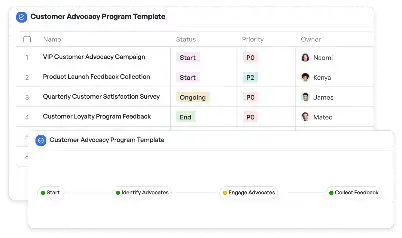Fog Computing Node Deployment Strategy
Achieve project success with the Fog Computing Node Deployment Strategy today!

What is Fog Computing Node Deployment Strategy?
Fog Computing Node Deployment Strategy refers to the systematic approach of deploying fog nodes within a distributed computing architecture. Fog computing bridges the gap between cloud computing and edge devices, enabling faster data processing and reduced latency. This strategy is crucial for industries like IoT, healthcare, and smart cities, where real-time data processing is essential. By strategically placing fog nodes closer to data sources, organizations can optimize resource utilization, enhance scalability, and ensure seamless integration with existing systems. For example, in a smart traffic management system, fog nodes can process vehicle data locally, reducing the dependency on centralized cloud systems and improving response times.
Try this template now
Who is this Fog Computing Node Deployment Strategy Template for?
This template is designed for IT architects, system engineers, and project managers involved in deploying fog computing infrastructures. Typical roles include IoT solution developers, network administrators, and data scientists working on real-time analytics. For instance, a healthcare IT team deploying fog nodes to process patient data locally or a retail company setting up fog nodes for real-time inventory tracking can benefit from this strategy. It is also ideal for organizations looking to enhance their edge computing capabilities while maintaining robust connectivity with cloud systems.

Try this template now
Why use this Fog Computing Node Deployment Strategy?
The Fog Computing Node Deployment Strategy addresses specific challenges such as high latency, bandwidth limitations, and data security concerns. By deploying fog nodes closer to data sources, organizations can achieve faster processing speeds, reduce network congestion, and enhance data privacy. For example, in autonomous vehicle communication, fog nodes can process critical data locally, ensuring real-time decision-making without relying on cloud connectivity. Additionally, this strategy provides scalability, allowing businesses to expand their fog computing infrastructure as needed without disrupting existing operations.

Try this template now
Get Started with the Fog Computing Node Deployment Strategy
Follow these simple steps to get started with Meegle templates:
1. Click 'Get this Free Template Now' to sign up for Meegle.
2. After signing up, you will be redirected to the Fog Computing Node Deployment Strategy. Click 'Use this Template' to create a version of this template in your workspace.
3. Customize the workflow and fields of the template to suit your specific needs.
4. Start using the template and experience the full potential of Meegle!
Try this template now
Free forever for teams up to 20!
The world’s #1 visualized project management tool
Powered by the next gen visual workflow engine




